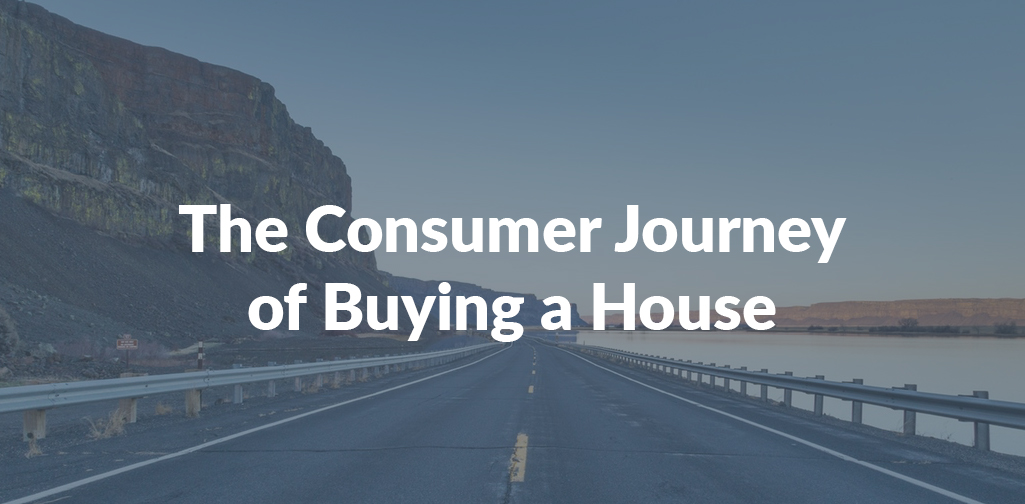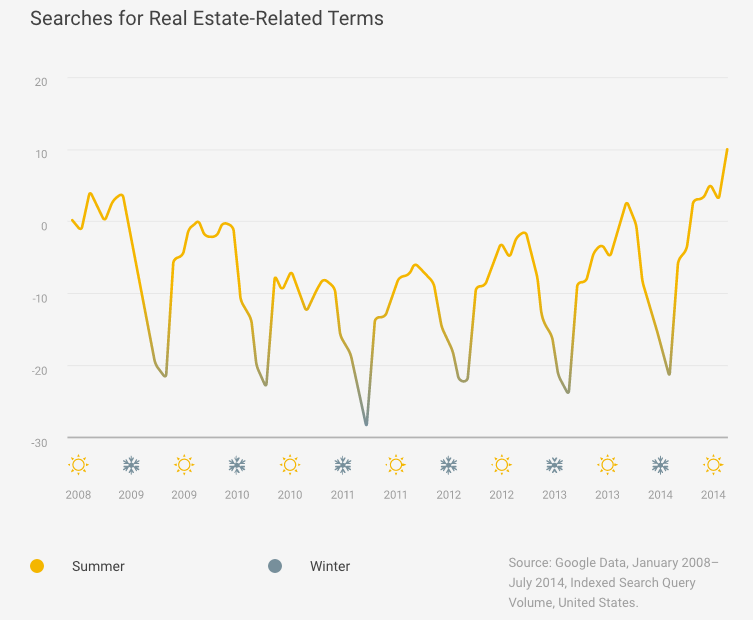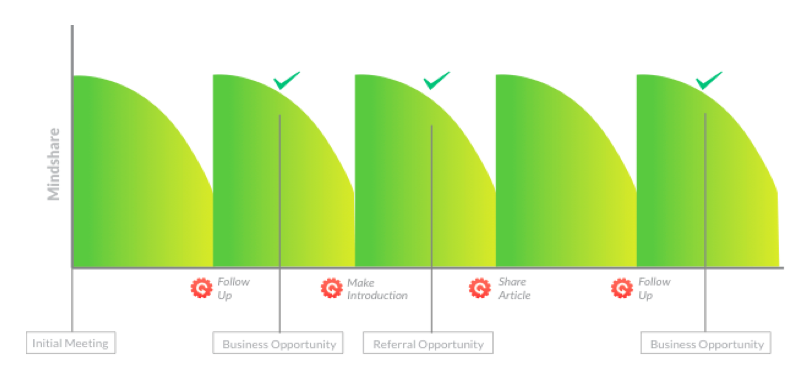You are viewing our site as an Agent, Switch Your View:
Agent | Broker Reset Filters to Default Back to ListThe Consumer Journey of Buying a House
February 26 2016

What does it take to get individuals to the point of becoming a home buyer? The journey through that consumer cycle is no longer as straightforward as it used to be, and with home prices on the rise and incomes remaining the same, the percentage of renters seems to outweigh those who own their own homes.
Those fickle Millennials are taking their time with making big decisions like getting married and buying homes, and instead are staying longer and longer with their parents and focusing on higher education and careers. But what’s the journey look like once they make the decision to strike out on their own and buy a home? We’re walking you through that consumer journey and offering some tips along the way of how to best market to each step of that journey.
Let’s buy a house!
So, what sets people off on the journey of buying a home? The reasons vary from the personal to the practical. How often have you heard that it’s just gotten too expensive to rent and it makes more sense to buy a home and pay out the same for a mortgage? It’s a common gripe, and realtor.com has even created a calculator for the issue where your clients can enter in their ideal home price compared to their rental price and find out how many years it will take before it makes sense to buy.

So, there we have it, there’s a critical point in our consumer’s renting lifespan where it no longer is fiscally responsible to continue renting. Generally, that’s where we’ll see an uptake in interest in home buying. Unfortunately, not everyone will be hitting this point at one synchronized time…and that’s where the fun begins! How can we pinpoint that time in their life and what do those buyers look like?
Who is looking to buy
According to the NAR, it’s Generation Y that’s making up the majority of home buyers on the market in 2015 and 2016 at 32%. Gen Y, also known as Millennials, is the generation that was born from the 1980s into the early 1990s. Millennials make up about 68% of first time home buyers, as they’re beginning to make the big move from their parents’ home or from long term rentals to buying their own homes.
But don’t discredit other demographics out there. Baby boomers make up about 31% of those home buyers, closely followed by Generation X with 27%, and the Silent Generation bringing up the rear with only 10% of the share of buyers. Interestingly enough, it’s those baby boomers that are either downsizing, or going in the opposite direction and are looking for multi-family homes as their millennial kids are moving back home, or as they take care of their aging parents instead of paying for pricey retirement homes.
When are they looking to buy
There may be a reason why we refer to cold leads as ‘cold’ when it comes to your potential leads in the real estate world. While you’re hibernating in your cozy home, the last thing on your mind is having to make a major move in the middle of the winter…unless your current home isn’t so cozy after all. Google’s search engine shows that there’s a major uptake in real estate-related searches in the warmer months of the year, while there’s a drop off during the colder.

No, this doesn’t mean that you need to give up marketing to potential buyers and sellers in the winter. It just means you need to change up your strategy for how you’re building up a relationship with them so that when summer hits and they do start searching, you’re already top-of-mind.
How to acquire these leads
People ready to buy a home may be ready to look, but it’s going to be a while before they go through with the purchase. Half of people on the hunt for a home begin their formal search process anywhere from 6 to 12 months before they actually made a purchase. That’s a long cycle to take advantage of as a real estate agent, but it certainly gives you plenty of chances to reach out to these potential leads throughout the year. So, where do you find all these people to begin with?
Start by optimizing your digital advertising presence. Are you utilizing Facebook ads to the fullest extent? Based on the research on who’s preparing to make a real estate purchase, you can target your ads on Facebook to be seen by that demographic. And what’s better than that? You can spend very little on these ad campaigns and still see a great impact when you’re targeting them correctly. It’s a great way to subtly touch these people as they’re still in the ‘Googling phase’ of their real estate search.
Don’t forget, if you’re making your presence known via online channels, you need to maintain your social media profiles! Nothing will discredit you quicker than outdated or nonexistent social media profiles, especially if you’re linking to them in a digital advertisement.

Ready to head out into the non-digital world? Get involved in local area events and gatherings. This can be as simple as attending local city council meetings and getting to know those council and board members. Become a knowledgable member of the community, participate in meetings and get to know the locals. It’s a great place to get to know what home buyers are looking for from their community as a form of research, but you can also keep tabs on home or business owners who many be looking to jump into the market. When your potential leads get to know you on a more personal level, they’re far more likely to turn to you when they’re ready to buy, because really, you’ve already been there for most of the journey anyway.
How to build the relationship
The end goal though is to build a genuine relationship with these leads to then score them as a client. So how do you get to that point? The key is keeping in mind the fact this is a long process and that it won’t necessarily be productive to give these lead prospects the hard sell throughout the entire buying cycle, especially if they’re taking the longer 8 to 12 month journey.
Reach out to your network–can they connect you with their friends or contacts who are potentially in the market for a new home? You might be surprised with how many referrals you can glean from friends and former customers; it seems like everyone knows someone who’s in the market for a new home. Once you’re connected, go ahead and reach out in a simple way–maybe it’s just by inviting them to connect on LinkedIn or sending them a quick email.
Again, stay away from the hard sell! Instead, let them know that you’re more than happy to answer any questions they may have, or even shoot over some blog articles or references that they may find helpful as they begin their journey.
Offer to meet with your potential leads for coffee with the intention of having them pick your brain or get your advice on the market, where they should be looking and how they should be conducting their search. This conversation will give you a great jumping off point for continuing to keep in touch with them as they start their search. Once you know what they’re looking for, you can give them recommendations for areas to look. Eventually, once you feel that they’re ready, offer to show them some places.
Take a journey
While you may already be a major and important part of the consumer journey of buying a house, there’s no reason why you shouldn't be along for the whole ride. It’s a great way to assure that cold or potential leads become your customers and by building up those relationships, you’re setting yourself up to get more referrals in the future. Understand the cyclical nature of home buying, who’s out there looking and what they’re looking for, and become a knowledgable guide to take them along on their home buying journey!
To view the original article, visit the Contactually blog.









